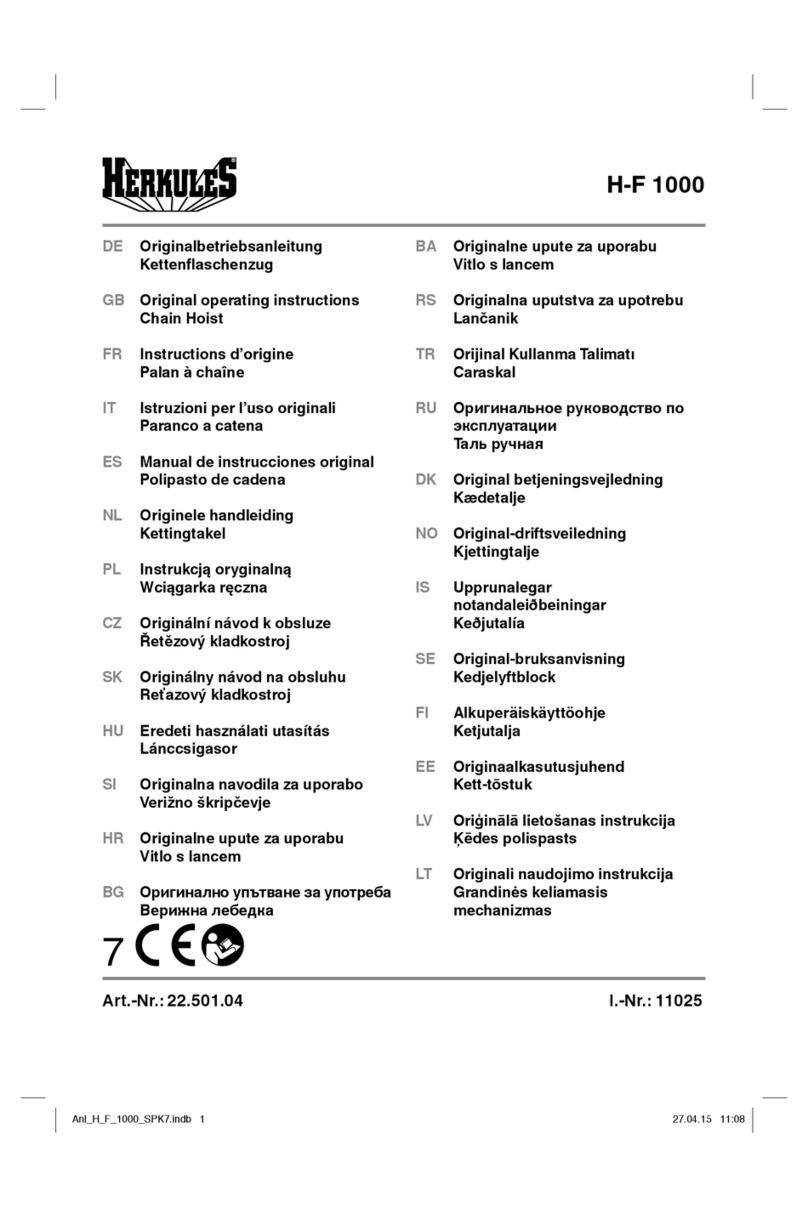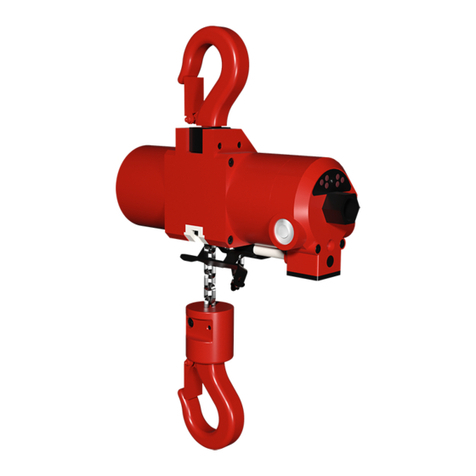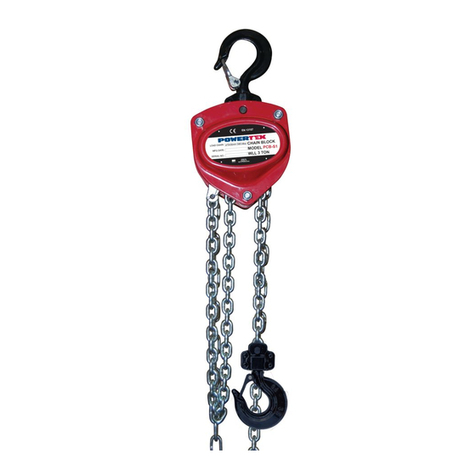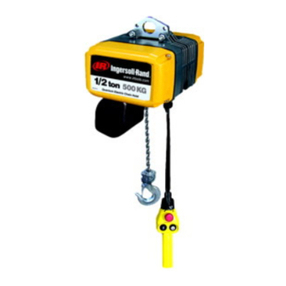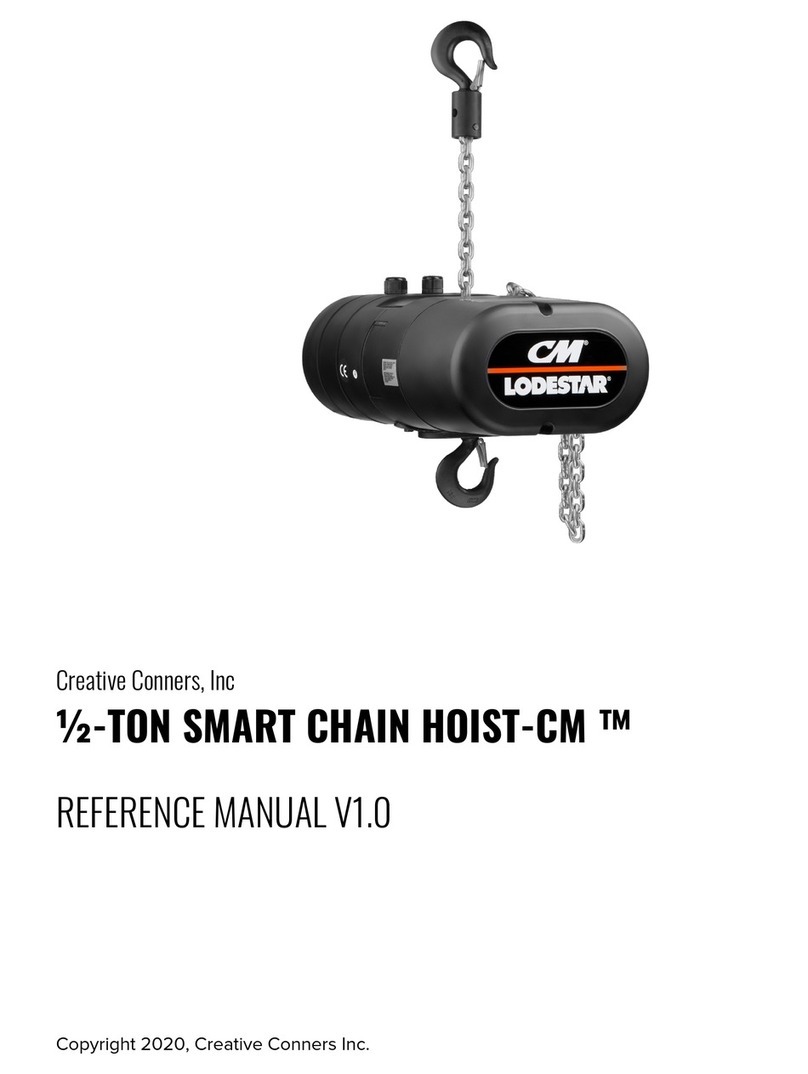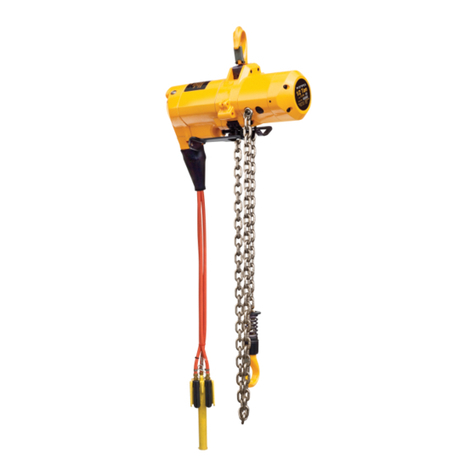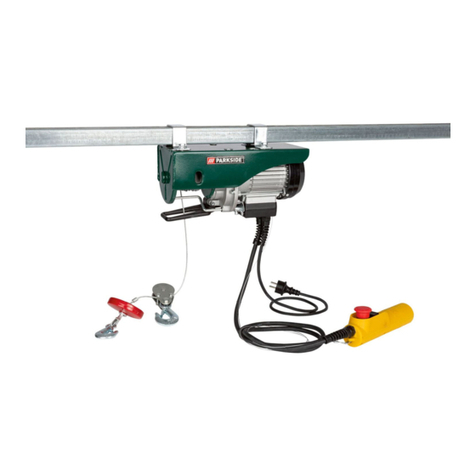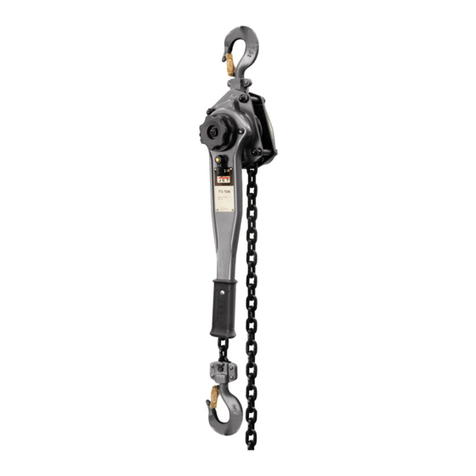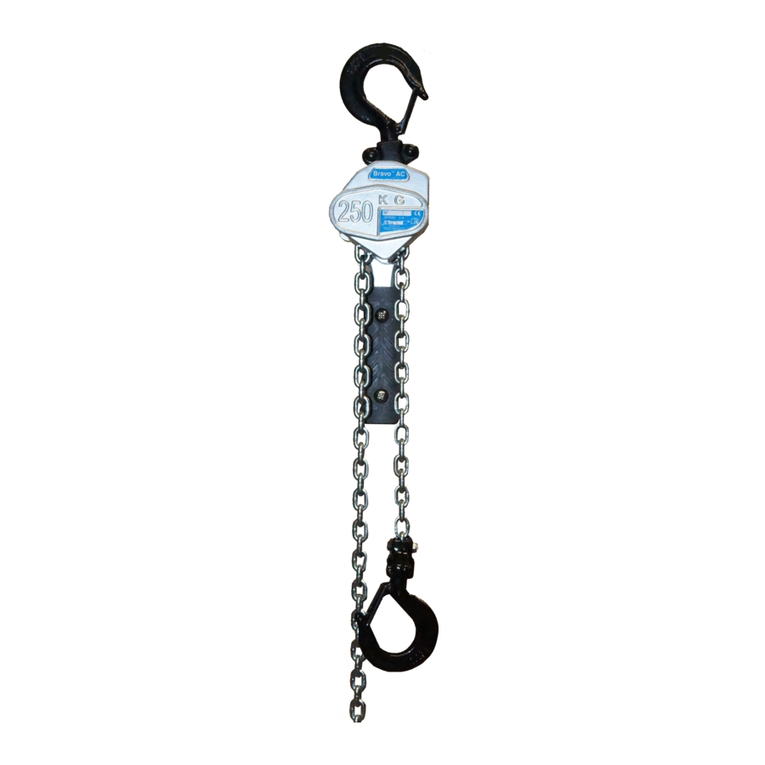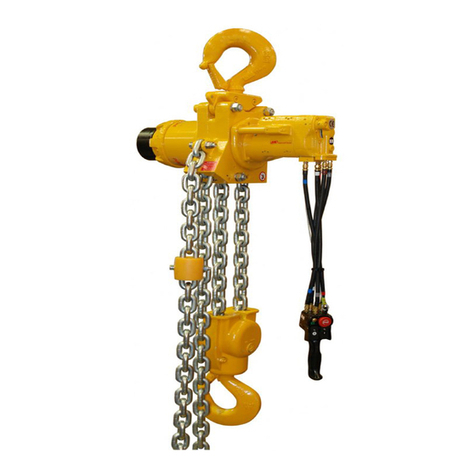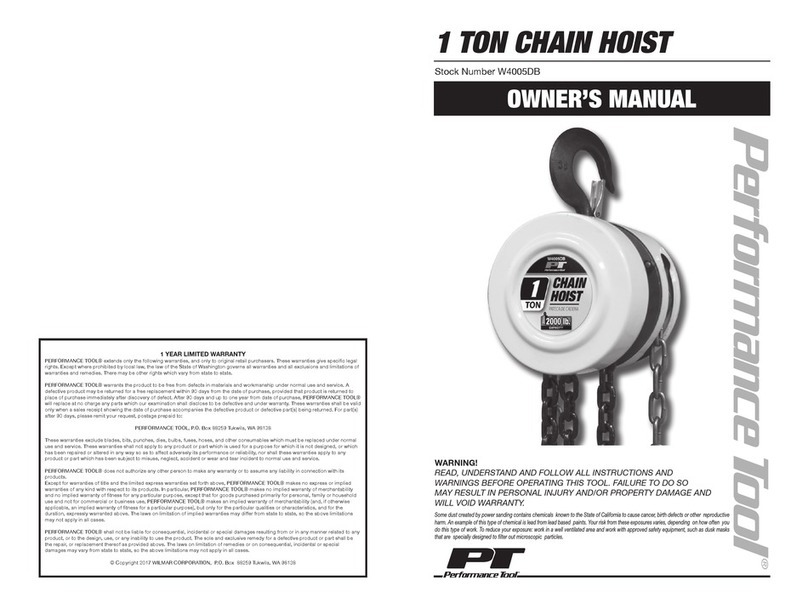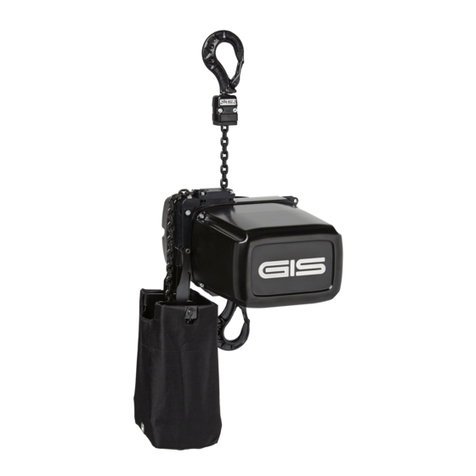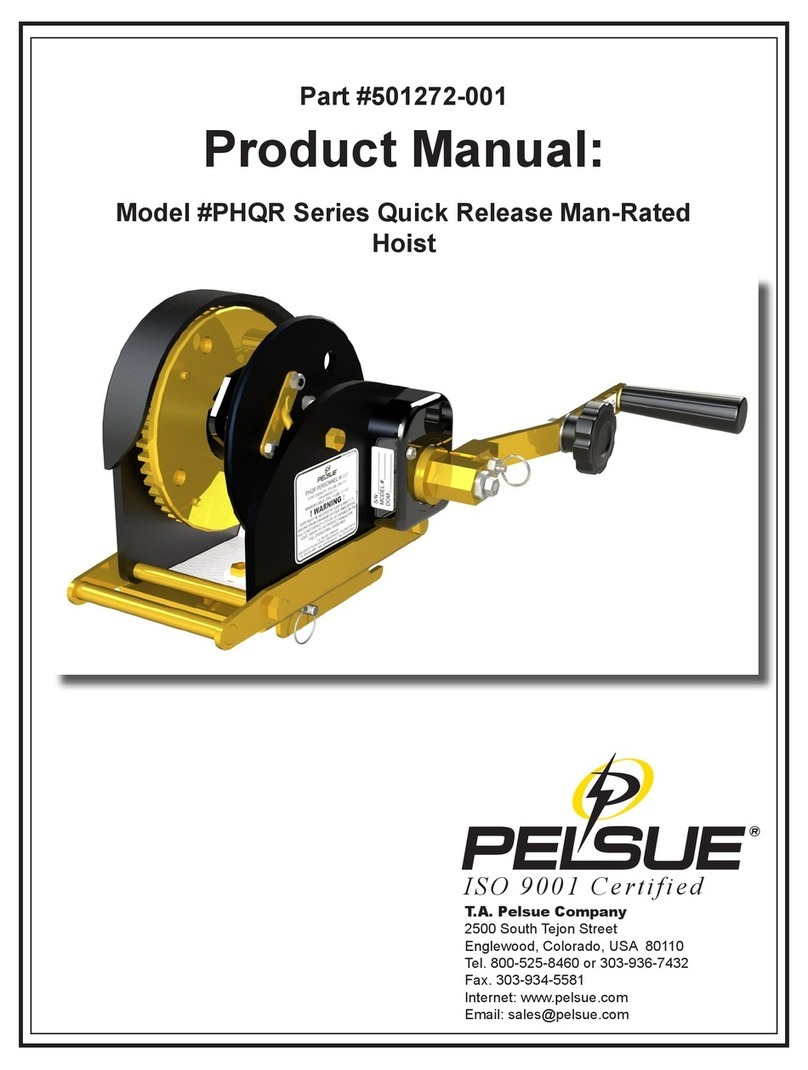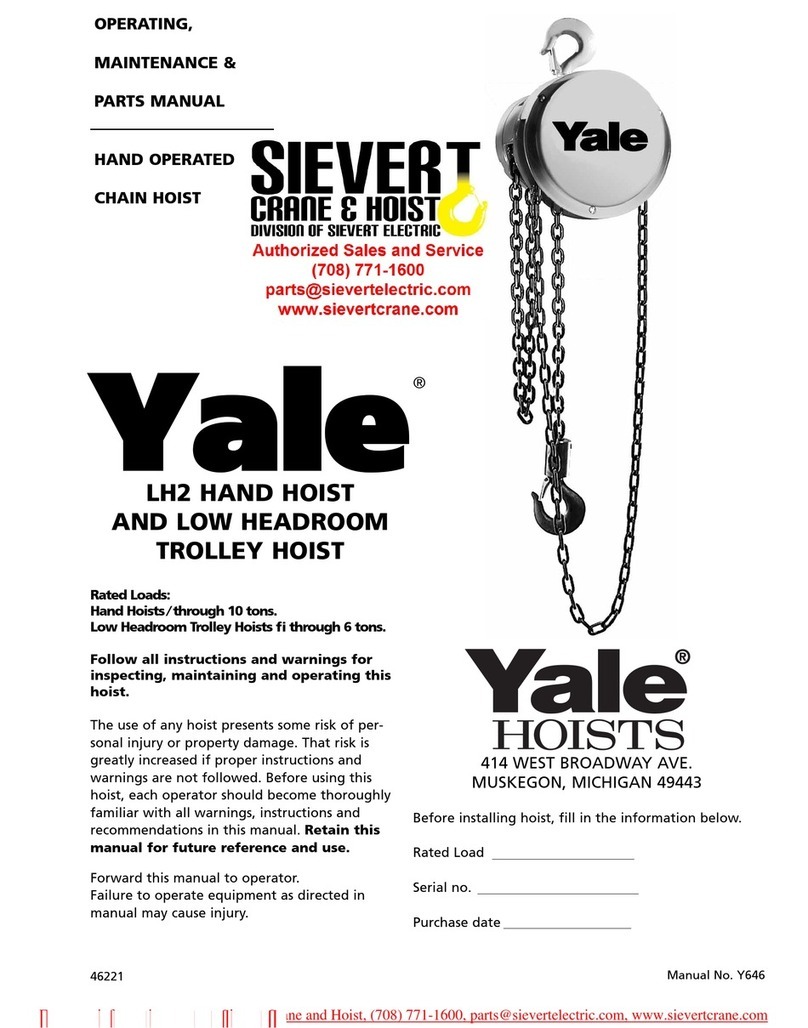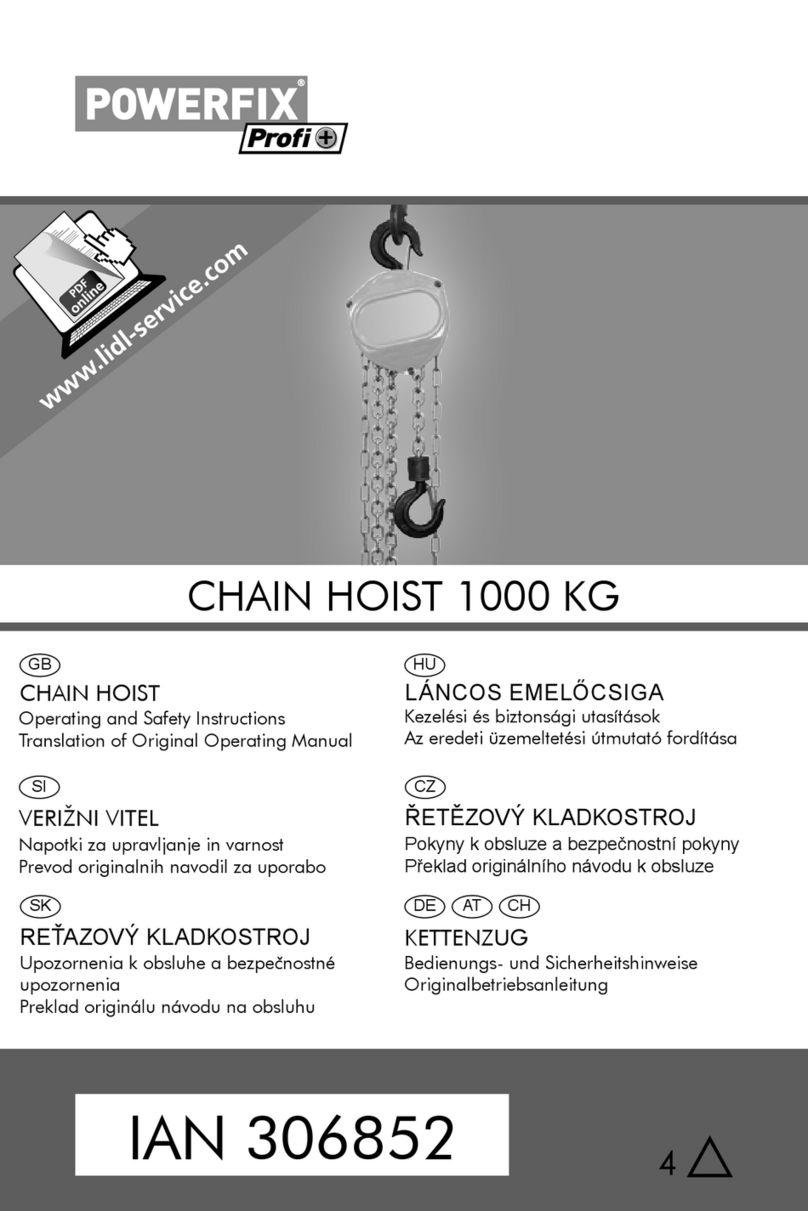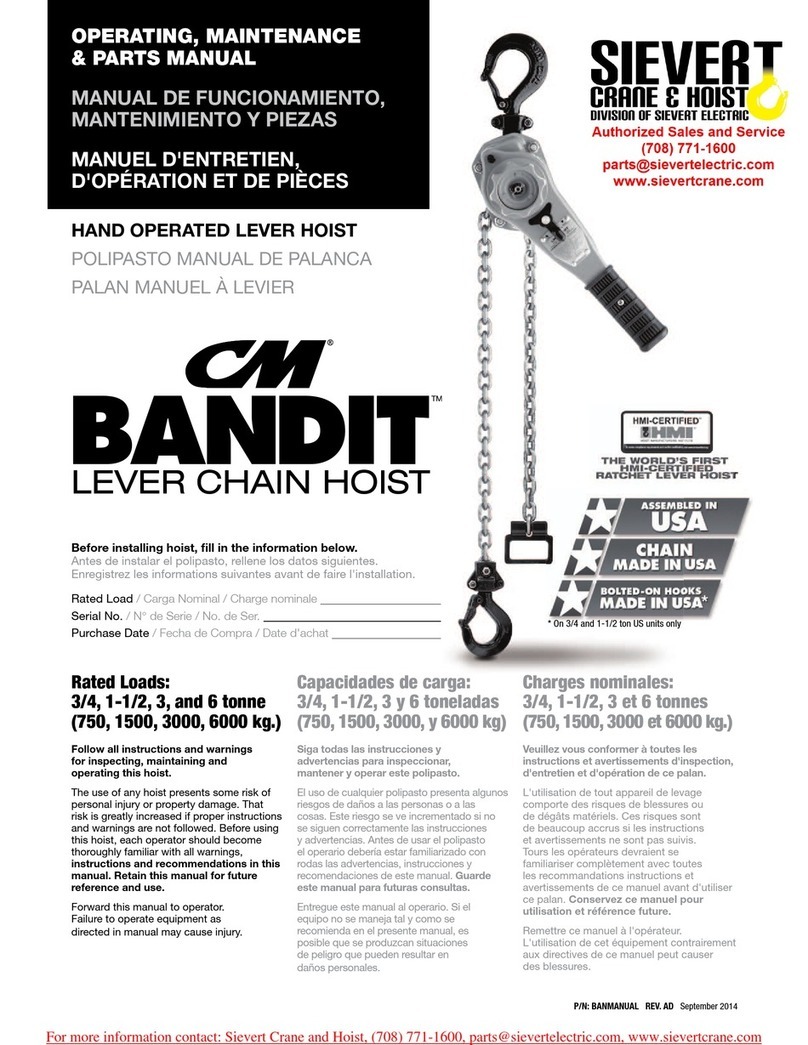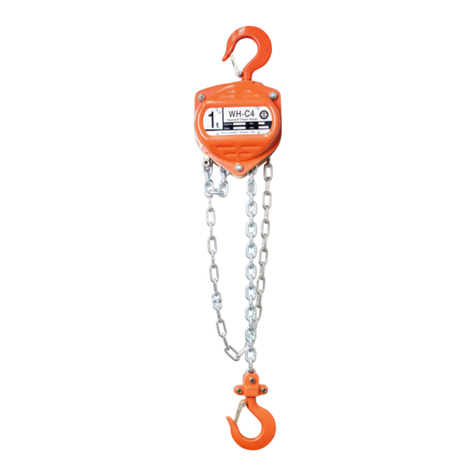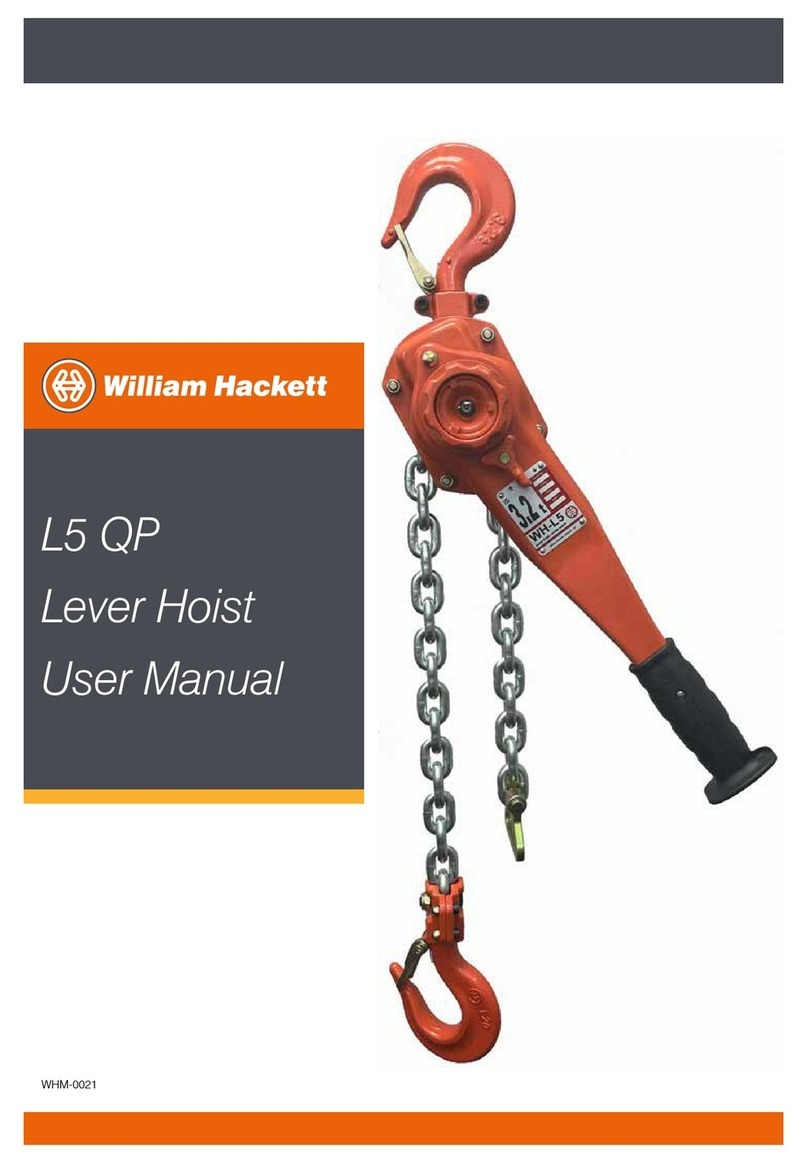
5
Hoist Selection
Selecting the correct Hackett WH-L4 lever hoist
William Hackett L4 lever hoists are manufactured in accordance with BS EN 13157:2004+A1:2009, ASME
B30.21-2014, AS1418.2-1997 and SANS 1636:2-2007.
William Hackett L4 lever hoists are assembled, chained and tested in the UK to the height of lift specified by the
end user.
The configuration of lever hoist assemblies are demonstrated on previous page and are in accordance with the
product specification, dimensions and safe working load (SWL) recorded in Table 1.
William Hackett L4 lever hoists can be used within an operating temperature range of -40°C to +55°C.
In accordance with statutory requirements (e.g. The Lifting Operations and Lifting Equipment Regulations
1998), all lifts using chain block assemblies should be planned by a competent person; require risk
assessment and the production of a task method statement; and be subject to execution by suitably trained
operatives under the supervision of a responsible person. The specification of the lever hoist assemblies
required to achieve a safe lifting operation must be determined by a competent person.
Careful consideration should be given to the mass of the load being lifted and any dynamic factors that may
be likely to affect the load on the hoist. Select the hoist capacity equal to or greater than the load. Ideally lever
hoists should not be used to lift loads below 10% of their rated WLL limit.
It is not intended that the recommendations in this manual take precedence over existing plant safety rules and
regulations or OSHA regulations. In the event that conflict exists between a rule set forth in this publication and
a similar rule already set by an individual company, the more stringent of the two should take precedence.
A thorough study of the information in this manual should provide a better understanding of safe operating
procedures and afford a greater margin of safety for people and equipment.
In accordance with statutory requirements (e.g. The Lifting Operations and Lifting Equipment Regulations
1998), all lifts using chain block assemblies should be planned by a competent person; require risk
assessment and the production of a task method statement; and be subject to execution by suitably trained
operatives under the supervision of a responsible person. The specification of the lever hoist assemblies
required to achieve a safe lifting operation must be determined by a competent person.

